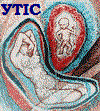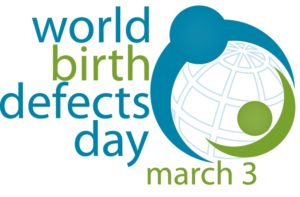
|
|
|
|
|
Reduction of Infant Morbidity and Mortality - Gastroschisis as one Index
1 Khmelnytsky OMNI-Net, City Children's Hospital and Perinatal Center
2 Rivne OMNI-Net, Diagnostic Center, Children's Hospital and Medical Genetics Department
3 Volyn OMNI-Net and Regional Children's Territorial Medical Center
4 Kherson OMNI-Net and Children's Regional Hospital
5 Crimea Autonomous Republic OMNI-Net, Ministry of Health Medical Care of Child and Maternity Division and Medical Genetics Center
6 Ukraine OMNI-Net and University of South Alabama
Background: Gastroschisis (GS) is a malformation that can often be detected prenatally and when treated early and effectively is often compatible with survival. The GS rates reported by OMNI-Net to EUROCAT for 2005-2006 were 6.27 per 10000 live births. GS can serve as a sentinel anomaly to assess the effectiveness of prenatal diagnostic services, neonatal care and surgical interventions. This project, among others, seeks to provide input toward fact-based prospective enhancements of maternal child health policies seeking to reduce infant mortality, morbidity and developmental disorders in Ukraine. (See companion abstract by Korzhynskyy and by Afanasyeva).
Method: Analysis of 143 instances of GS recorded by OMNI-Net registries and the corresponding medical records and other sources of information.
Results: Preliminary analysis showed that in Ukraine GS is often detected prenatally (71%); termination of pregnancy due to GS is high (54% vs. 14% in Europe as per EUROCAT 2001-2006); GS, in live-born Ukrainian infants, is generally an isolated malformation (80%); and that in Ukraine GS is a highly lethal malformation (59% compared to 13% in the U.S.). The main factor contributing to the high mortality was delayed transfer of infants to specialized facilities followed by a high prevalence of post-surgical complications.
Conclusion: The preliminary analysis provides data confirming informal reports that hundreds of Ukrainian infant-lives can be saved with enhancements of existing infant transportation systems and a better regionalization and experience by pediatric surgical teams focused on the care of infants. Enhancements in this domain will also impact the care of infants with spina bifida, cardiac and other non-lethal malformations. Therefore, this and other companion studies by OMNI-Net will continue and be expanded to four additional oblasts. (See companion abstract by Korzhynskyy).
The poster was presented at the 1-st Central and Eastern European Summit
on Preconception Health and Prevention of Birth Defects
(Budapest, August 27-30, 2008)
Click a part to view details








